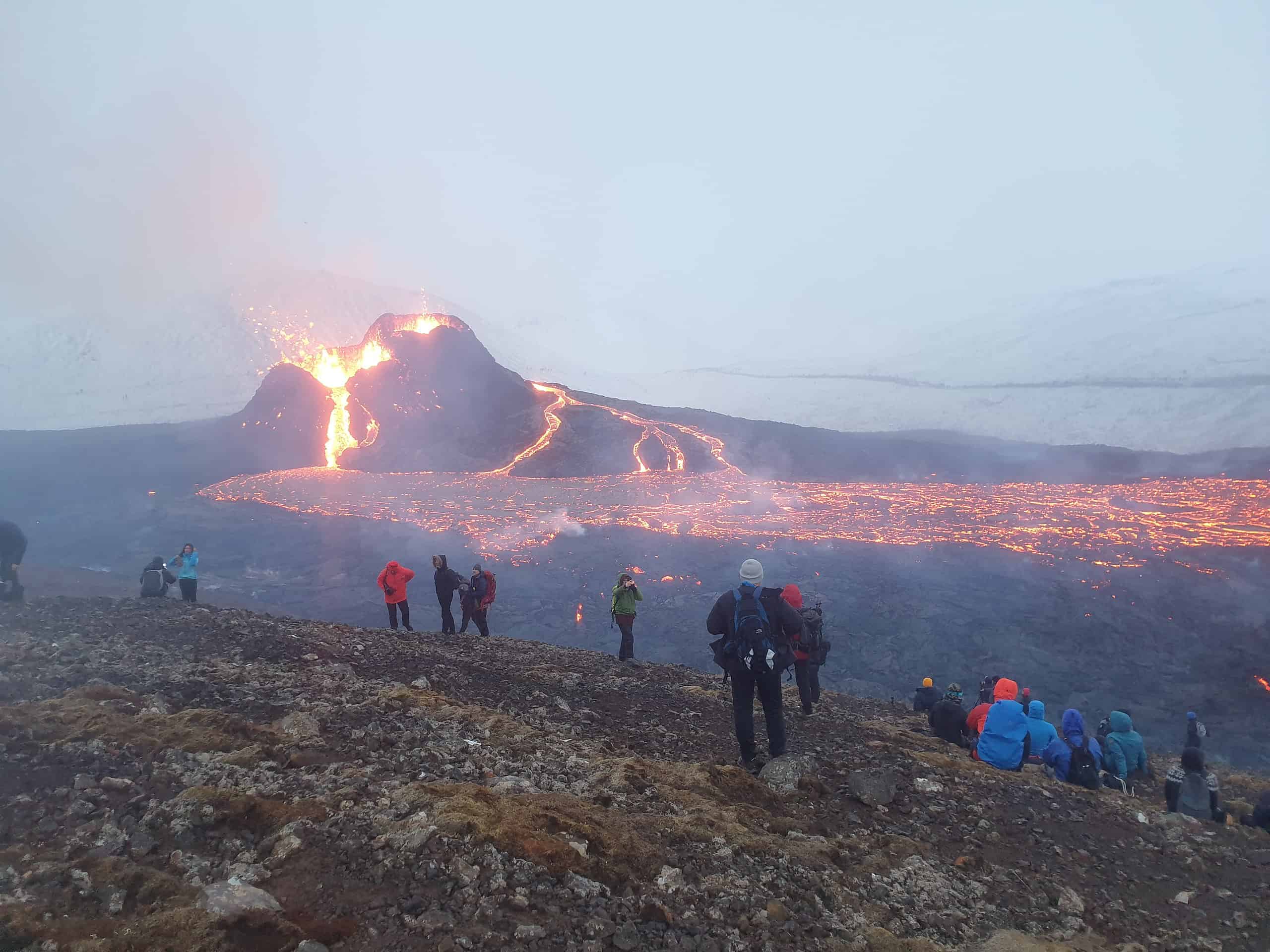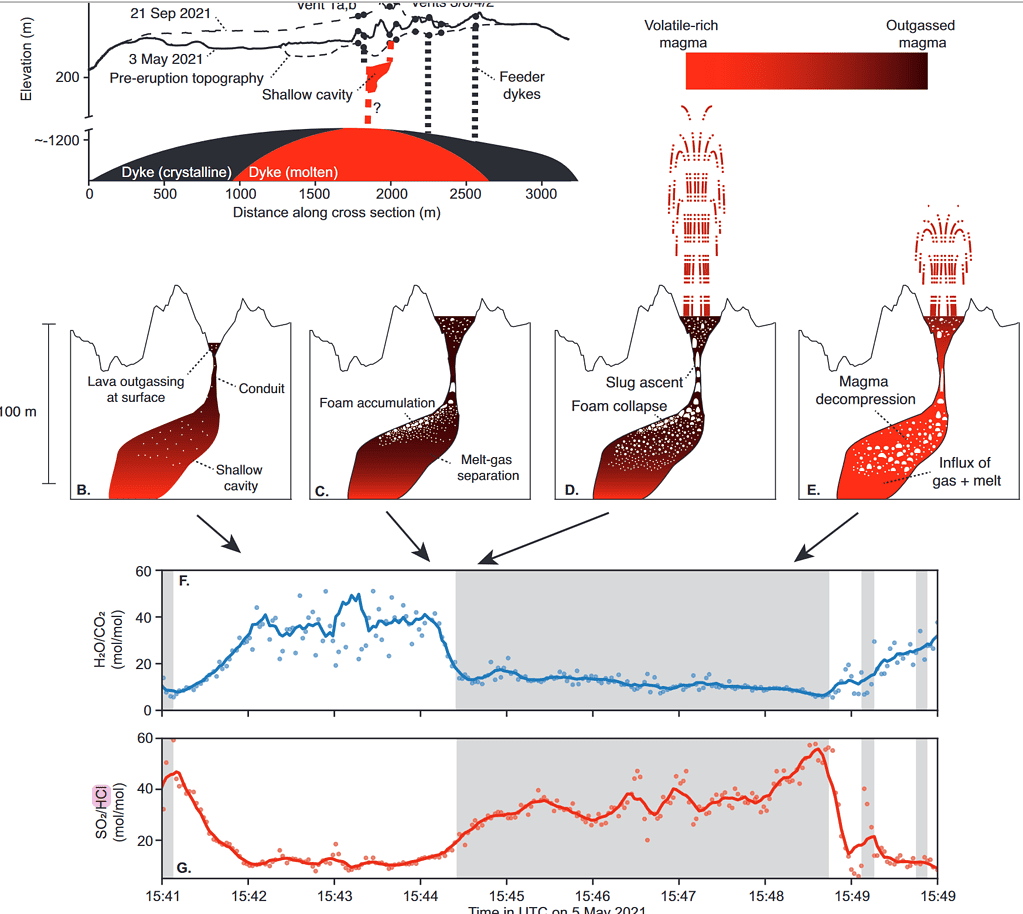The Fagradalsfjall volcano in Iceland erupted spectacularly in 2021, creating a dazzling and fearsome display of lava. But the lava didn’t just flow neatly from the volcano. It gushed and spewed, creating striking “lava fountains”. Now, a new study has shed light on the mechanisms behind this lava fountaining, showing how exactly this spectacular phenomenon can form.

Pumping lava
Lava fountains are not just visually mesmerizing; they are also key to understanding volcanic behavior. Typically extending from a few tens of meters to over a kilometer, these fountains differ from explosive and effusive eruption styles. At Fagradalsfjall, a unique pattern was observed: short, intense fountaining episodes followed by equally brief periods of repose. This rhythmic pattern, lasting over six weeks, presented a rare opportunity to analyze the underlying processes in unprecedented detail.
A team of volcanologists conducted detailed spectroscopic measurements of volcanic gases during these fountaining episodes. They used a special method called Open-path Fourier Transform Infrared (OP-FTIR) spectroscopy. This approach is well-suited for rapid observations of large areas (from square meters to square kilometers).
“Exceptional conditions on 5 May 2021 permitted close-range (~300 m), highly time-resolved (every ~ 2 s) spectroscopic measurement of emitted gases during 16 fountain-repose cycles,” the researchers write in the article.
By studying the chemical composition of the lava fountain, the research team proposes that the lava fountaining resulted from pressure cycles within a shallow, magma-filled cavity. As magma ascended, the increasing gas content led to the formation of a foam layer at the cavity’s roof. The collapse of this layer and the subsequent rise and expansion of gas bubbles created the dynamic overpressure driving the fountains.

This new understanding challenges traditional models of lava fountaining, which often emphasize the role of rapid magma ascent and gas-magma flow dynamics. The study at Fagradalsfjall points to a more complex interplay of factors, including magma degassing at shallow depths and the build-up and release of pressure in near-surface cavities.
Fagradalsfjall is a rare type of volcano formed when lava erupts through a thick ice sheet. However, the findings from Fagradalsfjall have broad implications for our understanding of volcanic behavior, particularly in basaltic eruptions — as is the case here. They highlight the importance of near-surface processes and the role of gas dynamics in shaping eruption styles. Future research could focus on the geometry of shallow magma plumbing systems and their role in different volcanic settings.
This study not only unravels the mystery behind the Fagradalsfjall volcano’s unique behavior but also sets the stage for further exploration into the depths of volcanic phenomena. The continued study of such dynamic natural processes is crucial for advancing our knowledge of Earth’s geology and improving our ability to forecast and mitigate the impacts of volcanic eruptions.
The findings were reported in the journal Nature Communications.






